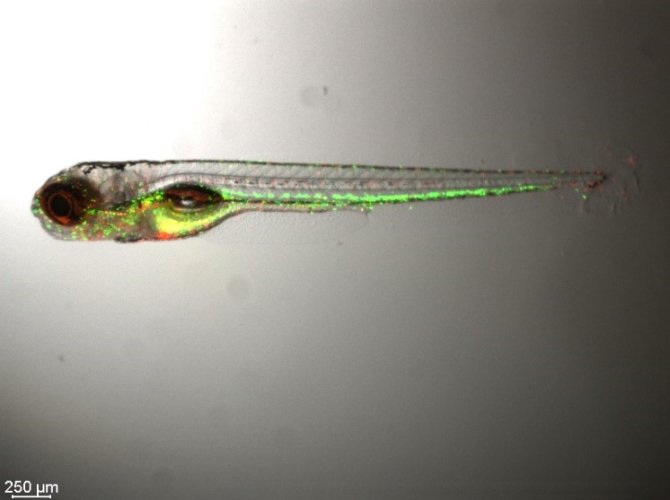
Project
Using the zebrafish to understand host-microbe interactions
In the lab, we use the zebrafish as our model species to understand the complex interactions between the host and the (intestinal) microbial community in health and disease. Zebrafish develop ex utero (outside a womb) and within 2 days small larvae hatch from their eggs. Since zebrafish larvae get colonised by microbiota as soon as they hatch from the egg, interesting discoveries relating to microbiota-host interactions and immune system activation may be done already during the first days of life. In the first two weeks of life, zebrafish are transparent, making them ideal model organisms to look at processes in vivo under the microscope. You can literally see life developing, from an unicellular stage up to complete fish with a heartbeat. One of the great advantages of using the zebrafish is that we can develop all sorts of transgenic zebrafish, via insertion of reporter cassettes in the DNA; such cassettes will be expressed when cells or products of these cells are active. An example of this is the mpx:eGFP fish where green fluorescent protein (GFP) is expressed under the myeloperoxidase (mpx) promotor. Every time the promotor is active GFP is produced (which can be visualized under the microscope). Since myeloperoxidase is always active in neutrophils of the fish, all the neutrophils are GFP positive all the time. Therefore, in the mpx:eGFP fish you can observe the neutrophils in the body of the zebrafish under the fluorescent microscope when the fish in anaesthetized (and not killed).

Fig.1 A double transgenic zebrafish: in green the Neutrophils in red the Macrophages
If you are interested in zebrafish-microbiota models, please contact sylvia.brugman@wur.nl